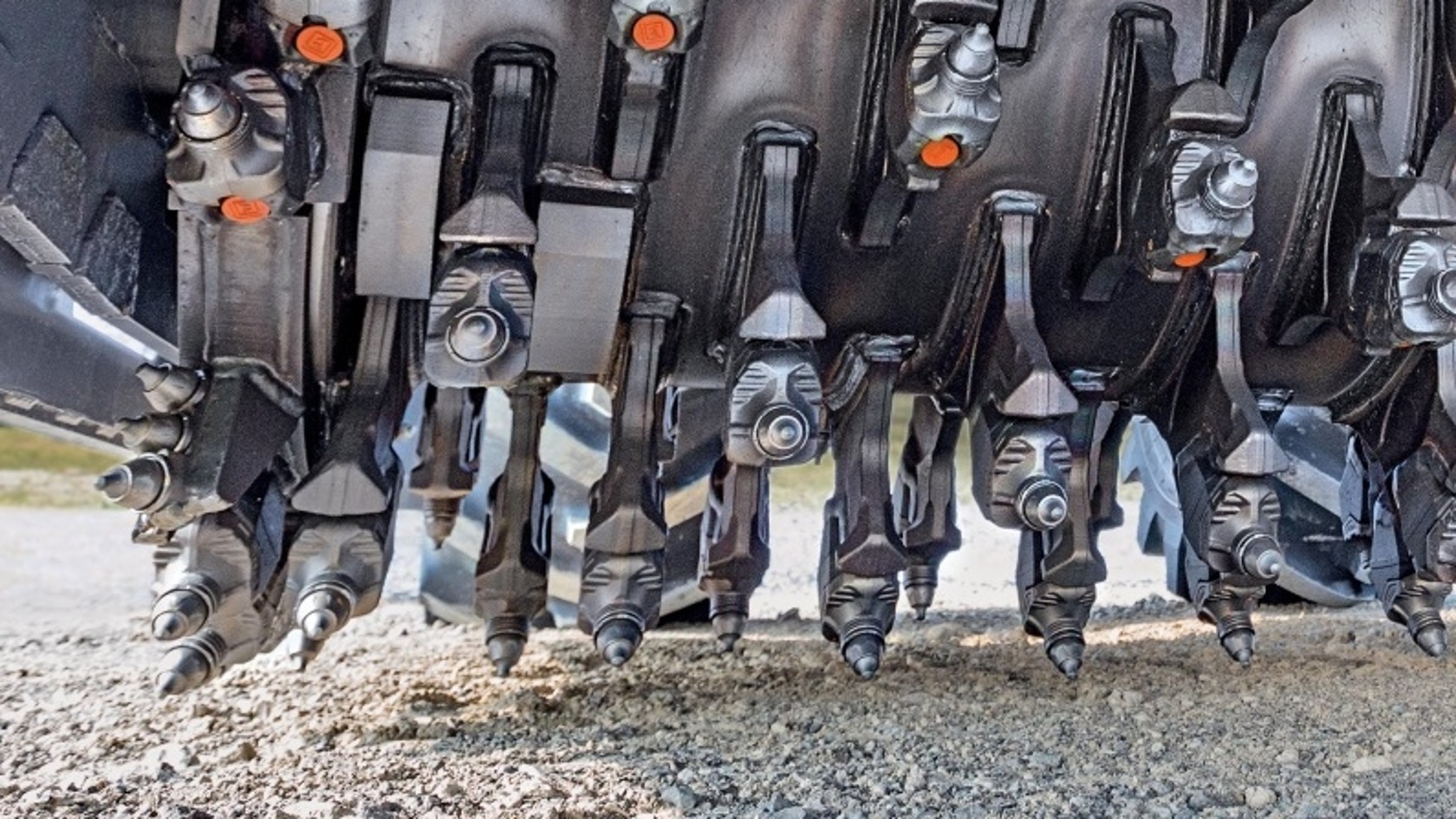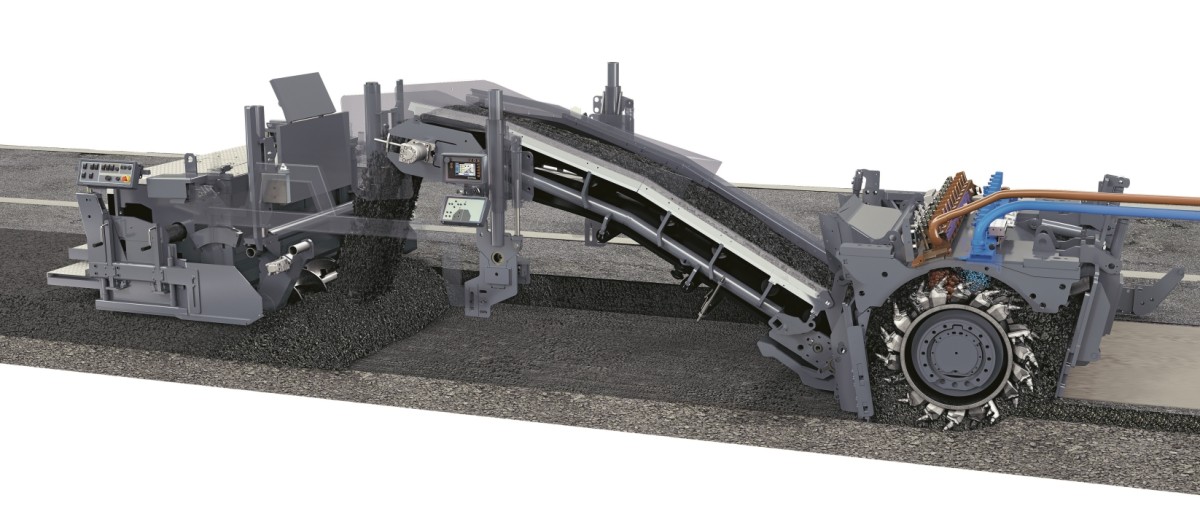

Mixed-in-place process
When mixing in-place / in-situ, a cold recycler granulates the existing pavement while mixing in binders and water homogeneously at the same time. This method produces a new construction material mixture in a single operation. The cold recyclers are equipped with a powerful milling and mixing rotor and highly efficient injection systems.
Perfectly arranged picks on the milling and mixing rotor, paired with a high-powered mechanical rotor drive, guarantee maximum milling and mixing performance – an essential prerequisite for fully homogeneous mixes. In addition, hard-wearing quick-change toolholder systems ensure optimum pick rotation, easy pick replacement and continuous operation for extended periods of time.
This range includes our state-of-the-art cold recyclers and soil stabilisers. The wheeled machines in the WR series are perfect for cold recycling when the road surface has been structurally damaged up to a working depth of 560 mm and are also multifunctional when used for soil stabilisation measures. The CR series of cold recyclers equipped with crawler units are particularly suitable for recycling asphalt pavements in need of rehabilitation up to a working depth of 350 mm.
A separate STREUMASTER binder spreader usually pre-spreads binding agents such as lime or cement. Following behind, the powerful milling and mixing rotor installed in the cold recycler / soil stabilizer mixes the asphalt layer in need of rehabilitation or the non-load-bearing soil with the pre-spread binder.
Water is provided via a hose connection coupled to a water tanker truck and injected into the mixing chamber via an injection bar.The recycled material is levelled off by a pressurized scraper blade at the rear rotor plate to create a perfectly even surface. In a final step, the soil is compacted by suitable HAMM earth compactors.
The milling and mixing rotor mixes the existing soil, any required amounts of pre-spread lime or cement and water to produce a homogeneous mix.

The milling and mixing rotor granulates the asphalt, injects any required amounts of binder and water and mixes the construction material mixture.

Where specified, cement is pre-spread by a STREUMASTER binder spreader which is followed by water and binder tanker trucks. The milling and mixing rotor installed in the W 240 CR / W 240 CRi granulates the asphalt layers. The pre-spread cement is mixed in at the same time while water and bitumen emulsion or foamed bitumen are injected into the mixing chamber via injection bars. The recycled construction material is transported to the rear of the machine via the primary conveyor and paved true to grade and slope by the VÖGELE paving screed with integrated spreading auger. Final compaction of the material is then effected by HAMM rollers.
The robust milling and mixing rotor granulates the damaged asphalt pavement. The granulated material is mixed with injected binders and water in the mixing chamber, thus creating a new homogeneous mix in an in-situ process.
Due to the helical design of the milling and mixing rotor, the recycled mix is conveyed towards the centre and subsequently transported to the paving unit via the primary conveyor. The spreading auger distributes the material evenly ahead of the variable paving screed which then paves it true to grade and slope.

Where specified, cement is pre-spread by a STREUMASTER binder spreader which is followed by water and binder tanker trucks. The milling and mixing rotor granulates the asphalt layers. The pre-spread cement is mixed in at the same time while water and bitumen emulsion or foamed bitumen are injected into the mixing chamber via injection bars. The recycled construction material is picked up by the conveyor system and transported right into the material hopper of the VÖGELE asphalt paver for placing. Final compaction of the material is then effected by HAMM rollers.
The robust milling and mixing rotor granulates the damaged asphalt pavement. The granulated material is mixed with injected binders and water in the mixing chamber, thus creating a new homogeneous mix in an in-situ process.
Due to the helical design of the milling and mixing rotor, the recycled mix is conveyed towards the centre and subsequently transported to the material hopper of the asphalt paver via the conveyor system comprising primary and discharge conveyor. The asphalt paver then paves the material true to grade and slope.
